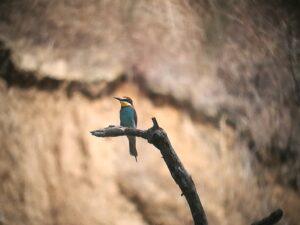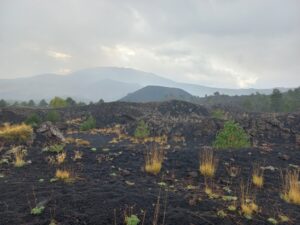Birding Sicily
The only thing that could compete with Sicily’s almost overwhelming treasury of historical and cultural gems is the island’s breathtaking natural beauty. Limestone cliffs drop precipitously into the sea, mountains tower up to 4,500 feet above the water, and peaceful coves are lapped by turquoise waves. The island’s interior is a unique mix of plains, gorges, mountains, and volcanos, a stunning wild landscape studded with vast vineyards and almond and lemon groves.

Sicily’s location in the Mediterranean makes the island a genuine migration hotspot. Every spring and fall, the winds bring great numbers of birds to Sicily as they move back and forth between Europe and Africa, and coastal headlands provide excellent lookout points for pallid and alpine swifts, collared flycatcher, bee-eater, hoopoe, nightjar, woodchat shrike, and spectacled warbler among many other small land bird migrants. Raptors, too, can be seen here in impressive numbers, with short-toed and booted eagles, black kite, red-footed falcon, and Montagu’s, marsh, and pallid harriers among the many species passing the island.
Sicily’s many reedbeds and wetlands, from small lakes to expansive marshes, hold such appealing species as penduline tit, moustached and Cetti’s warblers, little and great bitterns, squacco and purple herons, and shorebirds including marsh sandpiper, Kentish plover, curlew sandpiper, little stint, ruff, and spotted redshank. The large lakes and lagoons are magnets for spoonbills, slender-billed gulls, greater flamingos, water rails, and kingfishers. All three of the marsh terns—black, whiskered, and white-winged—are also possible. Even the purple swamphen has returned to some of Sicily’s wetlands, the fruit of successful reintroduction projects.
On a ferry ride to the Eolian and Egadi Islands, it pays to be on the lookout for Audouin’s gulls and yelkouan and Scopoli’s shearwaters, sometimes pursued by a hungry jaeger. It is also possible to spot a pod of striped or bottlenose dolphins passing by.
Inland, spectacular limestone gorges and high cliffs are fine places to look for rock sparrow and blue rock thrush, while almond and olive groves hold such species as rock and cirl buntings and woodlark. Notable year-round residents include stone curlew, zitting cisticola, spotless starling, and Sardinian warbler. A relaxed walk through Sicily’s stunning countryside and Mediterranean scrub may well lead to an encounter with a nightingale, golden oriole, lesser kestrel, European roller, calandra and greater short-toed larks, or even a Sicilian rock partridge.
Perhaps the most exciting ornithological development in Sicily this century has been the rescue of the Bonelli’s eagle, which was quickly disappearing from the island but, thanks to a carefully designed action plan, has now increased at an annual rate of more than 9% starting in 2011. The population is now up to a very impressive 50 breeding pairs.
